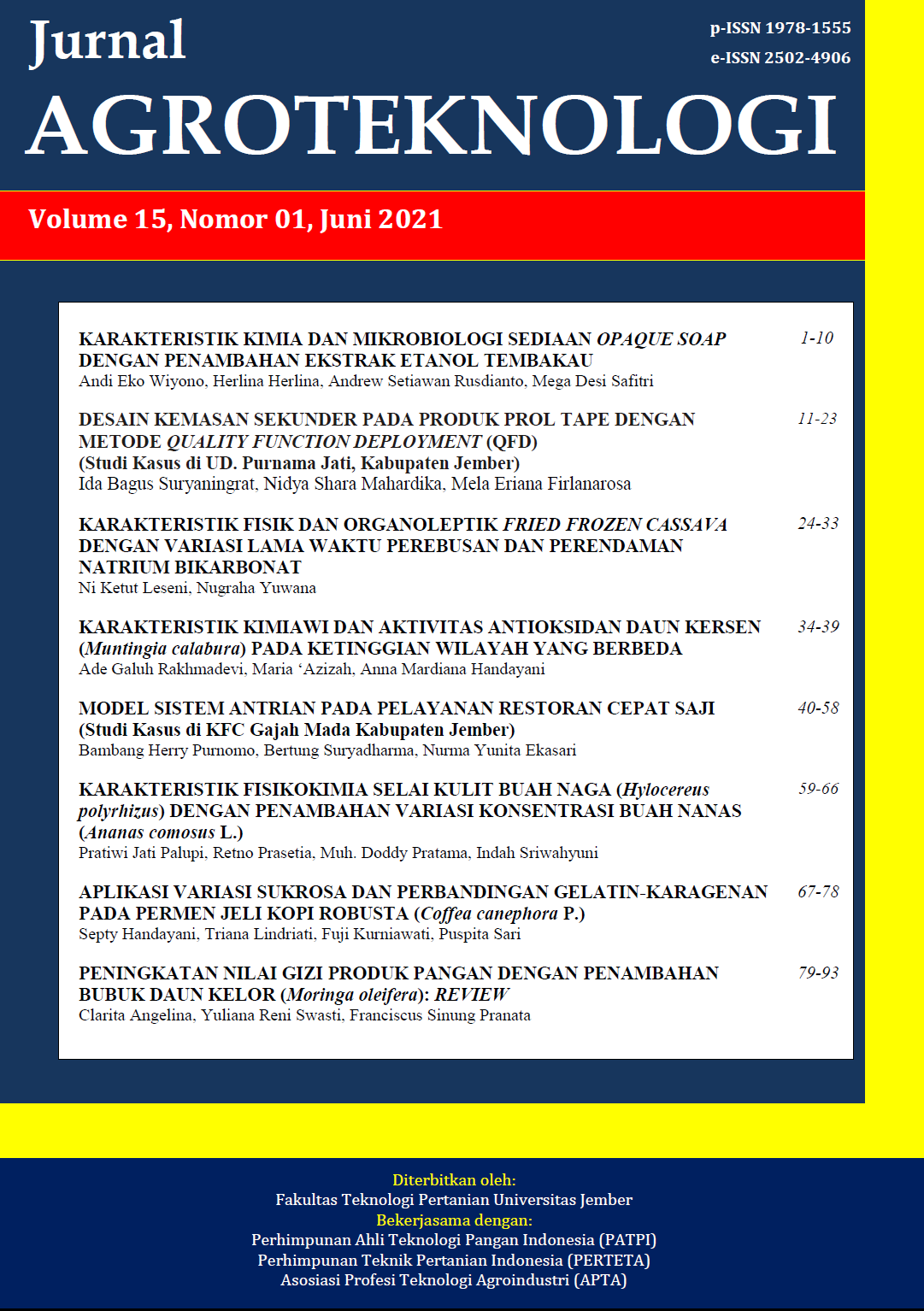KARAKTERISTIK FISIK DAN ORGANOLEPTIK FRIED FROZEN CASSAVA DENGAN VARIASI LAMA WAKTU PEREBUSAN DAN PERENDAMAN NATRIUM BIKARBONAT
DOI:
https://doi.org/10.19184/j-agt.v15i01.21547Abstract
The abundance of cassava, especially during the main harvest, triggers the accumulation of damaged cassava due to lack of processing and storage. An alternative solution to overcome this problem is by processing it into fried frozen cassava. The freezing process could extend product shelf life. In addition, it is necessary to have additional materials such as sodium bicarbonate to improve physical characteristics because it can form air cavities which make the product becomes more crispy outside and soft inside. The aim of this study was to determine the effect of variations in boiling time and sodium bicarbonate on the characteristic of fried frozen cassava. This study used 8 types of sample variation, 4 levels of factor A (boiling time: A0=0 min; A1=10 min; A2=20 min; A3=30 min) and 2 levels of factor B (sodium bicarbonate: B1=without soaking in sodium bicarbonate; B2=with soaking in sodium bicarbonate). Based on the results of the study, soaking in sodium bicarbonate and boiling time variations gave a significant effect on the texture of fried frozen cassava (value range 4-56 g/mm) but not on lightness (value range 64-71). The assessment from organoleptic characteristic (value range on color/lightness 2.63-3.48, aroma 2.51–3.40, flavor 1.75–3.92, texture 1.51–3.94, overall 1.81–3.81), showed that the fried frozen cassava with 30 minutes boiling time was preferred by consumers, especially those which soaked in sodium bicarbonate.
Keywords: cassava, frozen, boiling time, sodium bicarbonate
Downloads
Downloads
Published
Issue
Section
License
Jurnal Agroteknologi has CC-BY-SA or an equivalent license as the optimal license for the publication, distribution, use, and reuse of scholarly work. Authors who publish with this journal retain copyright and grant the journal the right of first publication with the work simultaneously licensed under a Creative Commons Attribution-ShareAlike 4.0 International License that allows others to share the work with an acknowledgment of the work's authorship and initial publication in this journal.
 JURNAL AGROTEKNOLOGI
JURNAL AGROTEKNOLOGI 








.png)
